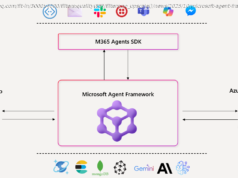Junior engineers must simultaneously develop foundational programming competencies while working with AI tools that can mask or bypass the very concepts they need to master.
According to a recent survey, 40% of software engineering managers anticipate that AI will drastically change the skills needed to be a successful software engineer within the next three years. Unsurprisingly, the widespread adoption of AI code assistants and other Generative AI (GenAI) tools is transforming how organizations develop technical talent and how new software engineers learn their craft.
The challenge lies not just in learning to code — it’s in learning to code effectively in an AI-augmented environment. Software engineering teams becoming truly proficient with AI tools requires a level of expertise that can be hindered by premature or excessive reliance on the very tools in question. This is the “skills-experience paradox”: junior engineers must simultaneously develop foundational programming competencies while working with AI tools that can mask or bypass the very concepts they need to master.
To address these new challenges, software engineering leaders must evolve their talent development strategies to create effective learning environments that balance AI tool adoption with fundamental skills development.
Software Engineering Leaders Must Lean on Structured Learning Pathways
The solution for software engineering leaders lies in structured learning pathways that combine fundamental skills development with staged AI tool integration, demonstrating how strong foundational skills enable more sophisticated AI-augmented software engineering. These pathways should integrate three key learning approaches spanning formal learning, social learning and on the job learning:
Formal learning consists of targeted microlearning modules that cover fundamental concepts and AI tool capabilities, delivered just-in-time for practical application.
Social learning is facilitated through communities of practice, where junior developers share experiences with AI tools, build prompt libraries, and learn from the decision-making processes of senior developers.
On-the-job learning involves hands-on projects that progressively integrate AI tools, beginning with basic tasks like code completion and advancing to complex scenarios such as architecture pattern generation.






